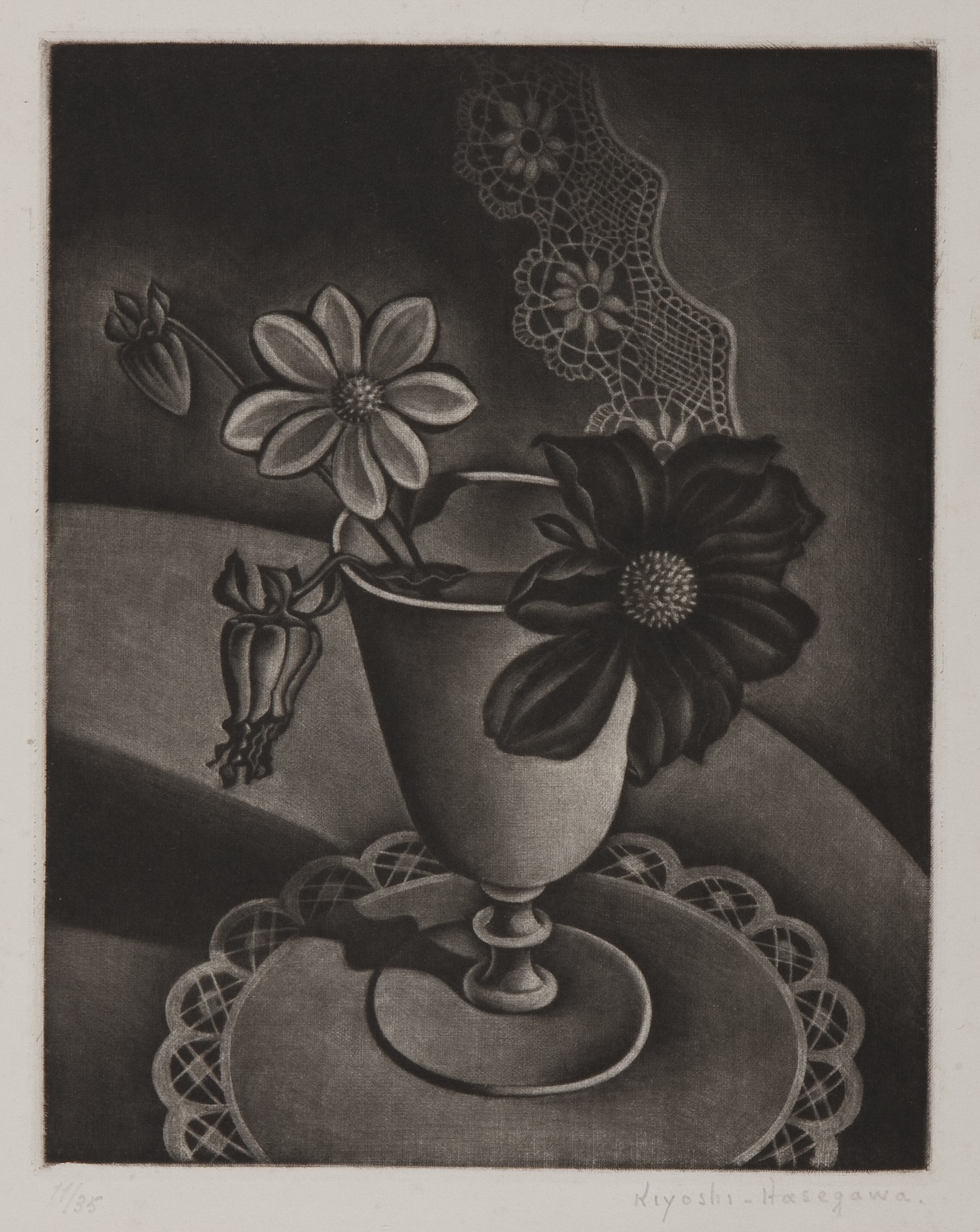|
The unique expression of copperplate prints such as rich black tones and strong lines are created with burnished copper plates, which an etcher Komai Tetsuro once called “the mirror in rose.” Copperplate print is a technique to get images on paper by putting ink in the indentation on a plate and then exerting pressure on it. The process is roughly divided into the engraving that the plate is directly incised and the etching that the plate is corroded with chemical mordant. Engraving, drypoint and mezzotint are included in the former, and etching, aquatint and soft-ground etching are the latter. These are sometimes used together.
These processes are originally invented for practical prints, and artists applied them to their creation. With the transition of time, as cheaper, faster and more mass-productive technologies have been developed, they have become not to be used other than some elaborate prints. Yet artists still choose them as the techniques for their art works.
European-born copperplate prints were first brought into Japan by the Jesuit missionary in the 16th century, but the Anti-Christian Edicts blocked the inflow. In the 18th century, Shiba Kokan, Aoudo Denzen and others reopened the historical page of copperplate prints in Japan. After the Meiji Restoration, the Government invited foreign experts in need of print production like bills and stamps, and places and occasions for Japanese to learn directly from them were prepared.
Copperplates prints as practical use including illustration in books and map making were considered afresh in the 20th century as one of the techniques of sosaku-hanga, the creative print, which makes it a principle to do self-draw, self-curve, self-print. Printing techniques came to be taught at art schools, and some aimed to become etchers, having more occasion to show their works at exhibitions.
In this way, copperplate print has gained a firm position as an art. At present, 2000 works are copperplate printings out of our 8300 print collections. This large ratio shows that a number of print artists devoted their life enthralled by potentiality of the process that was once demanded as a practical and precise technology.
This exhibition holds various works from the printed matters in the Meiji era to the contemporary art prints. Graving or corroding metal plates and gaining inverted images––artists have been drawn to this somewhat “alchemic” process. We hope viewers to enjoy the sea of allurement of copperplate prints.
http://momaw.jp/
Information Provided by: The Museum of Modern Art, Wakayama
Period: September 13,2016 (Tue) 〜 November 3,2016 (Thu)
Hours: 9:30 to 17:00
Closed: Closed on Monday, except for September 19 and October 10 (September 20 and October 11 are closed)
Venue: The Museum of Modern Art, Wakayama
|



